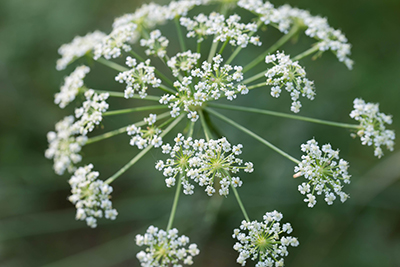By Melissa Wagoner
It may look like a carrot, parsley, parsnips or Queen Anne’s lace but gardeners and foragers should be wary because what might look like a tasty treat may in fact be poison hemlock.
“This plant is very poisonous and can be fatal if ingested,” Brooke Edmunds, an OSU Extension Service Community Horticulturist, said. “Even contacting the sap can cause a serious reaction.”
Known to cause a blistering rash, vomiting, rapid heartbeat, high blood pressure, muscle paralysis, confusion and even kidney failure in humans, livestock, pets and wildlife, the plant is not to be trifled with. If discovered it should be eradicated immediately.
“Wear gloves to avoid skin exposure,” Edmunds said. He has focused on Marion and Polk counties since 2014. He suggested the plants be removed early in the season – prior to the release of an estimated 30,000 seeds.
“Dig or cut the plants.” Then, bag and dispose of the debris – never compost or burn it.
“It may take six-plus growing seasons to exhaust the seed bank in the area,” Edmunds said, referring to the longevity of the seeds, which can survive for up to six years in the soil.
Originating in Europe and Asia, the poison hemlock introduced in North America during the 1800s by settlers who viewed it as an ornamental garden plant. It spread it to nearly every state, including Oregon. Its six to ten foot purple or red-streaked hairless stems, fern-like leaves and white lacy flowers are most often seen along roads, near creeks and drainage ditches, and in cleared woodlands, as well as in farmed fields and meadows.
“[T]his is an introduced plant (not native) that can be lethal to humans, livestock, and pets,” Edmunds reiterated.
If it is suspected a human or animal has ingested the plant, “Seek emergency medical attention as soon as possible. For animal exposure, reach out to your veterinarian.”
